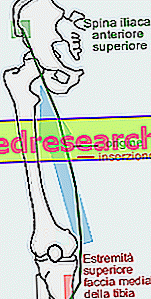Related articles: Brugada syndrome
Definition
Brugada syndrome is an inherited disorder characterized by dysfunction of the electrophysiology of the heart. Typically, patients do not have any structural heart disease, ie the myocardium is normal with regards to pumping and blood circulation.
Brugada syndrome is genetically transmitted and depends on multiple aberrations, most of which affect the SCN5A gene, which encodes the alpha subunit of the voltage-dependent sodium channel within cardiac cells. This condition predisposes to the risk of malignant ventricular arrhythmias and can cause sudden death in young adults with a structurally healthy heart.
Most common symptoms and signs *
- Arrhythmia
- Asthenia
- palpitations
- Dyspnoea
- Chest pain
- Shortness of breath
- Ventricular fibrillation
- Nightmares
- Insomnia
- Restlessness
- lipotimia
- Pallor
- presyncope
- Confusional state
- Fainting
- Tachycardia
- tachypnoea
- Dizziness
Further indications
Typically, the onset of symptoms occurs in the third to fourth decade of life.
In some cases, Brugada syndrome does not cause life-long symptomatic episodes, despite the finding of characteristic electrocardiogram changes. In many patients, however, this condition leads to loss of consciousness due to the rapid and ineffective contraction of the ventricles (polymorphic ventricular tachycardia). Fainting can occur without warning symptoms, which means that people suffering from the syndrome are likely to suffer traumas when they fall. Usually, these manifestations are not related to physical exercise and can also occur at rest or during sleep. Episodes of syncope can also be caused by fever, large meals and treatment with some medications (including antiarrhythmics and antidepressants). Individuals with Brugada syndrome may also report palpitations or a feeling of failure associated with malaise and nocturnal enuresis.
In severe cases, ventricular fibrillation can lead to cardiac arrest and can cause sudden patient death.

The diagnosis is made on the basis of clinical examinations and on the electrocardiogram. The electrocardiographic picture allows us to find ST-segment oversupply in the right precordial derivations and susceptibility to ventricular tachyarrhythmia. The diagnosis of Brugada syndrome should be considered in patients with a personal and / or family history of cardiac arrest or unexplained syncope.
The implantable defibrillator-cardioverter (ICD) is the only effective therapeutic option in patients presenting with syncope and are resuscitated after cardiac arrest. These devices continuously monitor the heart rhythm and intervene in case of sustained ventricular arrhythmias, life-threatening. However, it is still unclear what is the best treatment for patients with ECG alterations and family history, although they have an increased risk of sudden cardiac death. In general, individuals with Brugada syndrome are advised to avoid certain drugs (eg flecainide or propafenone) and exposure to situations that may favor the onset of dangerous arrhythmic episodes.



